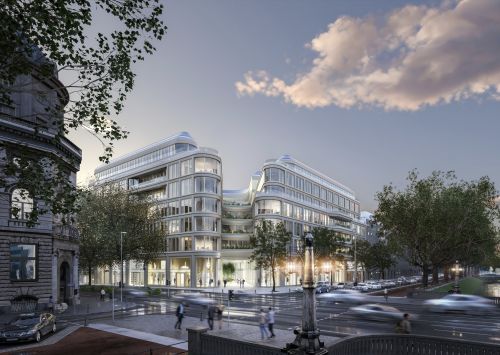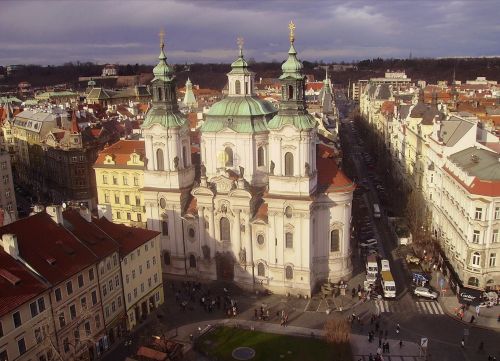Making it in Minsk
Country focus
There are not many things that spring to mind when we Poles think about Belarus, but those that do are usually not so pleasant: poverty, dictatorship, bribes and queues at the border. However, if you do actually make the trip to western Belarus, you can see that things are rather different to all the stereotypes. And it is now quite easy to go to Belarus. The strict approach to visas that was in place has been gradually loosened for years and a true revolution took place on January 9th this year – the president of Belarus signed an order enabling the citizens of 80 countries to enter the country without visas. The list includes 39 European countries and all EU member states, as well as the US and Japan. But there are two conditions: the visit can be no longer than five days, and the entry and exit must take place via Minsk Airport. This is enough for a business reconnaissance trip or a weekend break. However, one thing does need to be said: this is not a country that’s going to suit everyone or every entrepreneur.
Retail trade upside down
The large format retail scene in Belarus is rather unusual. The only market that bears any resemblance to a Central European’s understanding of the concept is that of the capital, Minsk. However, even this one is vastly different from the more stable and developed European markets we are familiar with. In H1 2016 there were no significant shopping centre openings in Minsk, but there were a few announcements. The largest project in operation so far had a local character and was incomplete: Globus Park in Schtchomyslitsa. The mixed-use complex is situated near the R1 Minsk–Brest route and will eventually have a retail section of 30,000 sqm, which is to comprise a DIY market, an interior design centre as well as a food court and an entertainment zone. So far a Korona supermarket and a Korona Technohousehold appliances and audio/video equipment store have been opened. A free shuttle bus service runs between Globus Park and the Malinovka underground station. As well as the retail it is also to include storage facilities, offices and a customs agency. When will it see the light of day? Nobody seems to know. The incompleteness of opened projects has become something of a trademark for local developers. In December last year the grand opening took place of the Galleria Minsk shopping centre in the capital city. The app. 54,500 sqm mall was to have offered 150 stores, a Euroopt hypermarket and the largest food court in Belarus. However, it was only 40 pct leased on its opening day. Its popular brands include Ryłko, Pandora, Mothercare and Sony Centre, while there are also quite a few local retailers in the centre. A large Reserved boutique is to be open in the spring. The largest food court in Belarus has also partially opened – its almost 4,800 sqm area currently houses fast food restaurants but an adjacent restaurant section (now separated by a partition wall) is to be opened in March 2017. Galleria Minsk on Pobyedityeley Prospekt is part of a mixed-use complex with a combined area of app. 100,000 sqm, which along with shops includes a DoubleTree by Hilton hotel and a 27,000 sqm, five-storey car park for app. 1,000 vehicles.
The opening of the Dana Mall shopping centre, which is part of the large Mayak Minska residential estate, was even more enigmatic. The first opening date of the mall was set for October 2015, only for this to be postponed several times. Finally, in October 2016 a Green supermarket was opened. As in the case of Galleria Minsk, the investors behind Dana Mall were relying on Christmas shopping, which was why when the centre opened its doors in December last year a mere four of the 100 shops in the centre had been opened: a Kosmo drugstore, a 7 Karat jewellers and two children’s goods shops – Buslik and Funtastic. The escalator did not work and the lifts only stopped on certain floors. The majority of the units were empty or closed, while some were adorned with tantalising ‘opening soon’ notices. It is still not clear when the announced openings of Zara, Mango, Bershka, Stradivarius and H&M as well as a hypermarket, a five-screen multiplex and the food court are to take place. “We signed a lease three years ago. I cannot recall the number of times the opening date has been postponed,” revealed one anonymous tenant on a local portal. “We accidentally found out that the centre itself had finally been opened. We drove there and as we entered we saw that the unit we had signed the contract for is now occupied by another shop! There has been no contact with the investor; we don’t know when we can move our furniture in or whether we can actually do that,” he added. We also failed to contact the investor, Dana Holdings. However, other interested retailers have managed to do so – they have been informed that there is no vacant space in the centre.
“Minsk city council has recently announced a retail development programme for 2016–2020, the aim of which is to open 500,000 sqm of retail over the period, which comes to between 900,000 and 1.1 mln sqm gla,” says Denis Chetverikov, the director of the market research and consultancy department at Colliers International Belarus. “At the beginning of 2016 the retail space saturation in Minsk was 607 sqm per 1,000 inhabitants. The demand was not high, but you can’t say it was nonexistent. The fact that there are more and more western chains is a good sign,” he adds. And the future of the market seems to be even more promising – in April 2016, the Inditex clothing retail group started to employ people in Belarus, and in June household goods retailer Jysk announced plans to enter the market.
In 2015, rent levels in the capital’s shopping centres declined, falling in euro terms by an average of 20–25 pct – and even by more than 30 pct in some cases. However, in H1 2016 the rates clearly stabilised. The most characteristic fact is the gap between the highest and the lowest rents: prime rates for very small units in centres in the capital city reached EUR 200 per sqm, while on the other side of the spectrum some units are being leased at symbolic rates, comparable to the costs of leasing warehouse space. In smaller towns, in an attempt to attract customers at all costs shopping centre owners have often been agreeing to flexible rents determined by the turnover of that particular shop. Unsurprisingly, therefore, anchors are in a strong negotiating position. Prior to this, hyper- and supermarkets paid EUR 17–19 per sqm (sometimes EUR 20–21), whereas in H1 2016 owners could only ask for EUR 12–14 per sqm. However, the decline in rents has had its positive aspects –the demand is now clearly growing as tenants can afford to rent increasingly larger areas.
Offices stabilise
The Belarusian office market is much more balanced. In terms of modern, European-standard space, this is also limited to Minsk. In H1 2016, seven new office centres were opened in the capital city as well as a building in an existing business park. The combined area of these facilities came to app. 66,000 sqm gla. Six out of eight of the new buildings were opened in the north-eastern part of Minsk. Built-to-suit buildings are also under development: two such office buildings were ordered by Belagroprombank in the period in question. “Throughout 2015 you could sense the crisis on the office market, which resulted in a decline in demand – there were withdrawals from finalised leases and relocations to smaller premises were an everyday occurrence. We did not register a single lease for an area in excess of 1,000 sqm. H1 2016, however, was marked by normalisation,” explains Denis Chetverikov.
Rent rates have stabilised at a low level attractive for tenants. They have to pay EUR 18–27 per sqm per month in class ‘A’ office buildings, while ‘B1’ class space costs EUR 7–17 and the price for ‘B2’ space is EUR 5–10. Interestingly, in the first six months of last year the vacancy rate for class ‘A’ went down to zero and for class ‘B’ it decreased from 17 pct to 14 pct, in spite of the completion of record high levels of new space.
With governmental support
The warehouse and logistics sector is also focused around the capital of Belarus. The transportation system includes a network of well-maintained roads and has been given a boost by low fuel prices. However, the BelToll system of paid roads, which includes the majority of transit roads and is now being gradually extended, represents a substantial cost for forwarding companies. The warehouse supply has not been at its best over the last few months – in H1 2016 the supply of new facilities was the lowest since 2009, when the National Logistics Network Development Programme was implemented after being drafted a year earlier. The programme came to an end in 2015, since when the sector seems to have lost its momentum.
On the other hand, logistics developers should be applauded for their lobbying talents, because just a few months later, in July 2016, the Belarusian Council of Ministers approved another programme for the development of the logistics and transit system in the country for 2016–2020. The governmental document states that the warehouse and logistics stock in 2020 needs to be 1.65 times bigger than its size at the beginning of 2016. The number of projects planned in the segment immediately skyrocketed. In H1 2016 only two noteworthy facilities were completed, which are interesting mostly due to the standard of their services rather than their size: in Kalinino an office and warehouse a 4,400 sqm facility was built, while a 2,700 sqm facility was completed in Novaya Vioska. “The decrease in the number of professional logistics operators on the market is certainly a worrying phenomenon because it could have a negative impact on the supply and demand, particularly with regard to class ‘A’ projects,” comments Denis Chetverikov. “Superior service quality and a significant level of automation in warehouse properties are the norm for warehouse operators, which small tenants are reluctant to pay for. Monthly net rents in class ‘A’ warehouse buildings amount to EUR 5.5–9 per sqm, while in class ‘B’ facilities the rents are EUR 2.5–7, excluding the technical service costs. The vacancy rate has not exceeded 10 pct for many years,” he says.
Low demand, short supply
The Belarusian investment market, in short, is virtually non-existent. “Purchase transactions rarely take place. Admittedly, we follow them, but we do not include them in analyses or reports,” says Denis Chetverikov of Colliers. “There have recently been years when there were no significant acquisitions on the market on a national scale. Thus it is not surprising that one or two transactions make up the annual result and it is difficult to draw any conclusions from them in terms of the state of the market or its trends. “The Belarusian real estate market is in a consolidation phase. Its best times are over and there is now an economic crisis, which has considerably suppressed the base demand,” believes Daniel Krutzinna, a partner of Estonian consultancy Civitta, which also has an office in Belarus. “However, this does not mean that the market should be ignored. It is worth taking an interest in leaseback transactions for ‘overleveraged’ retail facilities,” he adds.
Agent needed?
The lack of global real estate consultancies on the Belarusian market is an interesting phenomenon. Colliers International Belarus is the only agency to have opened a branch in the country, albeit in the form of a separate company operated on a franchise basis – and this was quite a few years ago. Other agencies operating on the market are from Russia, a country that has traditionally had a heavy influence in Belarus – and not only in an economic way. “We are present in Belarus, where we provide management services for a few projects from the retail and hotel sector,” reveals Natalia Kopeychenko, the head of public relations at JLL Russia & CIS. “It is not always necessary to open an office in a given country. We do not have a branch in Kyrgyzstan either, but we carry out quite a few projects there.”
Olesya Dzuba, the director of CBRE Russia, has declared that “to the best of her knowledge” her company does not have any expansion plans related to Belarus. Interestingly, the big four consultancies – EY, PwC, Deloitte and KPMG – have had branches in Minsk for many years. They are not, however, involved in the commercial property market.
Who will be the first?
From the European capital city perspective, Belarus might seem to be a peculiar, chaotic, unpredictable market with no significant potential and therefore not worthy of investors’ attention. However, much depends on the philosophy you follow. It’s like the old joke about an African country that was visited by two footwear manufacturers looking for new markets. One of them went home downhearted: “It’s not possible to do business there, everybody walks barefoot.” The other, however, returned brimming with enthusiasm: “We are going to do great business there, everybody walks barefoot!” When the economic crisis comes to an end (and there is much to indicate that it soon will) and the strict approach to visas is loosened (which is already taking place), the Belarusian market could turn out to become the latest European hotspot, with almost unlimited possibilities and sky-high investment yields. And if this is the case, it is worth being well-prepared.
Cooperation with our eastern neighbour
The largest Polish companies operating on the Belarusian market:
Atlas (Atlas-Tajfun, new production plant near Grodno), Getin Holding (Idea Bank Belarus), Black Red White, Mispol (production plant near Grodno), Unibep (construction projects in Belarus).
Belarusian sectors Polish companies are involved in:
sales of machinery, plastics, fruit and electronics goods. Belarus is Poland’s 25th largest export market.
Potential fields of cooperation include:
the power industry, including renewable energy sources and energy efficiency, transport, construction, environmental protection, the banking and insurance sector, and tourism.
Source: Polish Information and Foreign Investment Agency (PAIiIZ)
Tomasz Pisula
president of the Polish Information and Foreign Investment Agency
Let’s take the opportunity
We’re at an economically challenging moment in the modern history of Belarus and it is probably also a turning point in the country’s relations with its neighbours. Belarus could benefit from the cooling of its relations with Moscow and becoming closer economically to Europe, through Poland. Belarus, with its centralised economic policy, needs an advocate in the EU arena, but first of all it requires extensive reforms: privatisation and a substantial injection of foreign capital. This investment should be followed by the introduction of new technologies and modern business management models. Poland seems to be the natural choice as an economic guide and partner, both by investing in the country and opening doors for it to the European Union at the same time. In autumn 2016 we made an important step in this direction. At ‘Dobrosąsiedztwo 2016’ – the 20th Polish and Belarusian Economic Forum, the decision was taken to create a Polish–Belarusian IPO (Initial Public Offering) Centre. This is intended to be a professional legal consultancy to help Belarusian firms gain access to modern forms of financing through the Polish capital markets. Organisations participating in the initiative include the Warsaw Stock Exchange, the Polish and Belarusian Chamber of Commerce and Industry and the Belarusian State University. The Forum was also very important for another reason. It attracted as many as 150 Polish companies – several times more than previous events. This is purely due to the investment potential of our neighbour when it comes to large construction, transport and power projects as well as the financial sector. With the establishment of a Common Economic Zone by Belarus, Russia and Kazakhstan, Polish companies entering the country will gain free access to the two other markets. This could be an opportunity for new contracts, particularly if the economic situation in the region improves. Poland and Belarus moving closer together would also improve the retail turnover, which has been on the decline over the last few years. The financial support system of exports from budget funds, which Belarus is included in, could help to support our neighbour’s business operations.





















































